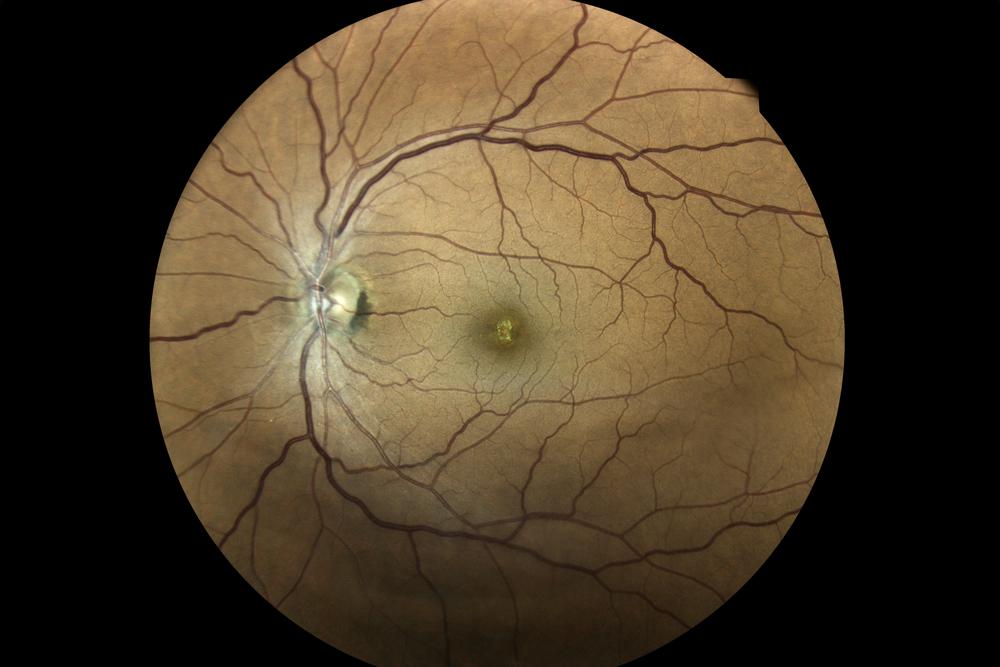
CREDIT: Getty/LeoPatrizi
On April 8, 2024, the moon will briefly pass between the sun and earth, blocking the sun and casting a shadow on the earth’s surface. You might be tempted to gaze up at this phenomenon. Resist that urge, says Nitish Mehta, MD, an eye surgeon at the NYU Langone Eye Center.
“Sadly, staring at the solar eclipse without eye protection, even for just a few seconds, can cause solar retinopathy, a potentially drastic and permanent reduction of vision without cure,” says Dr. Mehta. What’s worse, the full extent of the damage will not be immediately apparent, as damage can continue up to 12 hours after exposure.
The good news: there are safe ways to experience the solar eclipse.
How to View the Solar Eclipse
There are two major methods of viewing the eclipse safely: direct viewing and indirect viewing.
“Indirect viewing is the safest,” says Dr. Mehta. “You can create a homemade pinhole projector, which focuses light through a small hole, projecting the beauty of the eclipse onto a sheet of white paper. It can also be a fun project for the family in preparation for viewing an eclipse. Additionally, something as simple as holding up a colander to the sun and watching the small dots of light land on the ground can also work.”
“Sadly, staring at the solar eclipse without eye protection, even for just a few seconds, can cause solar retinopathy, a potentially drastic and permanent reduction of vision without cure.”
—Nitish Mehta, MD
Direct viewing requires special glasses. NASA recommends solar filters certified by the International Society of Organization (ISO) 12312-2 standard. These allow for solar viewing by only allowing an acceptable amount of ultraviolet and infrared radiation to pass through the filter. “Keep in mind that these are incredibly dark glasses,” Dr. Mehta explains. “You will not be able to see anything through them in normal lighting conditions. Also, they should not have any scratches, tears, or holes in them that could allow in unfiltered light. Remember to inspect them carefully, as fakes are commonplace online. The American Astronomical Society has a list of vendors that supply tested and approved products.”
Also, remember that children need eye protection too, so don’t let them view the eclipse without special glasses.
Viewing the Totality
There is one important exception to the rule about avoiding direct viewing. If you are within the 115-mile-wide strip of land extending 8,000 miles diagonally from Mexico through the United States to Canada, there will be a three- to four-minute window during which the moon completely covers the sun. This is known as the totality. The solar corona, which looks like a halo, may be visible during the totality, and it is safe to remove your solar glasses at this time. However, Dr. Mehta advises, “at the first glance of the normal sun’s return, even the tiniest sliver, the glasses must be put back on.”
How to Safely Photograph the Eclipse
Rule number one: never look at the sun through an unfiltered camera lens or telescope. This can be even more dangerous than viewing it with your bare eyes, because lenses can concentrate the damaging power of the light.
To take a close-up image using a camera, you’ll need a special solar filter: one different from the one used as eyeglasses. This reduces the light intensity to an amount the camera understands to produce a great photo (and protect your eyes in the process).
One nice setup would be a sturdy tripod, a digital camera with a lens filter, and a timer used to take a series of photos throughout the experience—with a quick removal of the solar filter and adjustment of the settings during the totality, if you are in the path of the total eclipse.
Realistically, most of us will use a smartphone, and we’ll still get good results. Here are a few tricks Dr. Mehta recommends:
- Turn off the flash.
- Lock the focus on distance, or “infinity.”
- Use a normal or wide-angle lens.
- Take advantage of the foreground to create an interesting scene.
- Use burst mode to capture multiple images as the scene changes.
- Wear your eclipse glasses and don’t use the phone to block the sun.
Did You Look Anyway? Here’s When to See an Ophthalmologist.
Sun-related eye damage, known as solar retinopathy, occurs when concentrations of light energy heat the cells responsible for vision, resulting in a complex series of chemical reactions. These can range from a temporary stunning of the light-sensitive cells to total, permanent destruction of parts of the eye.
Symptoms of solar retinopathy include loss of vision, loss of clarity, dark spots in the vision, and loss of color vision. The damage is typically painless and takes around a day to develop.
Dr. Mehta recommends “an evaluation with an ophthalmologist for any visual concern after viewing an eclipse.” While not much can be done to change the course of the damage once it has occurred, prognosis can be aided by careful evaluation over time by a specialist.
Watch more on viewing the solar eclipse safely from Dr. Mehta.

